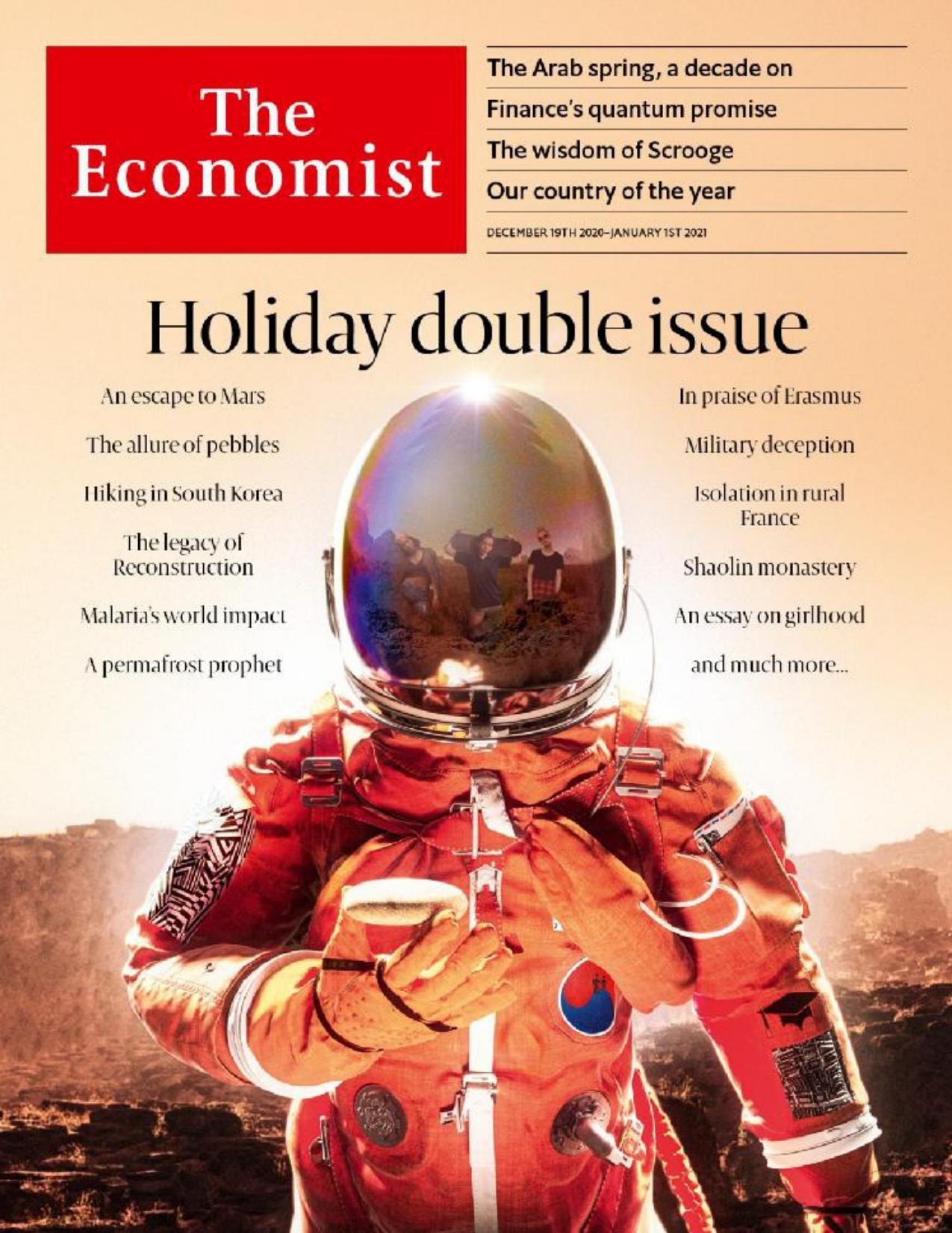The Economist (20201219) by calibre

Author:calibre
Language: eng
Format: azw3, mobi, pdf
Tags: news, The Economist
Publisher: calibre
Published: 2020-12-16T23:00:50.182000+00:00
Arranging nothingness
Not many would bother. A shingle beach appears to have no features at all, and to sustain nothing living. The âObserverâs Book of Sea and Seashoreâ dismisses these beaches as âthe nearest approach to a desert our islands can showâ. Rory disagrees with that. It may be nothingness but, as he puts it, âNothingness can be rearranged.â It can grow things, for a start. Just outside his fence there are sizeable clumps of sea-kale and silver ragwort. (Blanched sea-kale stems, according to Richard Mabey, doyen of foraging, are very good with sauce hollandaise.) Inside he has a vegetable bed with more kale, sea-beet and horseradish. He admits that he has cheated here, importing some topsoil from municipal flower-beds to help. But he didnât have to, for the long taproots of these plants can reach three feet or more through the shingle to fresh water. And a mulch of seaweed, as much as you can get, will do instead of soil. There are places right out on the Kemp Town shingle, the deepest part of Brighton beach, where dandelions grow. He knows some spots, towards Hove, where there are wild tomatoes. The desert can flower.
Is it good for anything else? At first, he thought he might build a house. He had done dry-stone walling for a spell. Primitive coal, full of sulphur, stinking as it burns, is sometimes brought in on the tide; he could mix coal-ash, sand and chalk together to make mortar. Most of the pebbles are rugged, durable nodules of flint washed out of the local chalk cliffs. But they are still too slippery and smooth for house-building. Plenty were incorporated, with other rubbishy ingredients, into the speculative Regency builds that became the grand terraces of Kemp Town; this blend, called âbungarooshâ, was so unstable that much of Brighton, it is said, could be demolished with a well-aimed hose.
A pebble house, then, was not a good idea. Even his pebble sculptures seemed unfeasible at first, just an insecure mound of stones. But once he had cracked the flints open with a hammer, to get a flat face with more angular edges, he could build an outside frame and pack it with pebbles into big, durable shapes. He began about eight years ago, in a bad winter, by making a simple workbench to clean his fish on. Then he thought he might make it prettier with pebbles of different sorts. And so the enterprise has gone on, and on.
His compound is now crammed as tightly as it can be with sculptures of every size and shape. Monumental figures of flint and brick pebbles alternate with smaller, friskier humanoids who dance among them. He has to turn sideways in places, ducking under a heavily decorated arch and along a pathway of flints inlaid with medallions of seagulls. Flint is naturally the dominant theme, ranging through black, blue and grey; red brick comes next; but then everything is picked out with the other hues the beach has to offer. Shingle seems merely brown from a distance, or at best an array of pointillist browns and greys.
Download
The Economist (20201219) by calibre.mobi
The Economist (20201219) by calibre.pdf
This site does not store any files on its server. We only index and link to content provided by other sites. Please contact the content providers to delete copyright contents if any and email us, we'll remove relevant links or contents immediately.
International Integration of the Brazilian Economy by Elias C. Grivoyannis(75951)
The Radium Girls by Kate Moore(11641)
Turbulence by E. J. Noyes(7720)
Nudge - Improving Decisions about Health, Wealth, and Happiness by Thaler Sunstein(7262)
The Black Swan by Nassim Nicholas Taleb(6786)
Rich Dad Poor Dad by Robert T. Kiyosaki(6197)
Pioneering Portfolio Management by David F. Swensen(6092)
Man-made Catastrophes and Risk Information Concealment by Dmitry Chernov & Didier Sornette(5674)
Zero to One by Peter Thiel(5508)
Secrecy World by Jake Bernstein(4407)
Millionaire: The Philanderer, Gambler, and Duelist Who Invented Modern Finance by Janet Gleeson(4118)
The Age of Surveillance Capitalism by Shoshana Zuboff(4002)
Skin in the Game by Nassim Nicholas Taleb(3983)
The Money Culture by Michael Lewis(3862)
Bullshit Jobs by David Graeber(3851)
Skin in the Game: Hidden Asymmetries in Daily Life by Nassim Nicholas Taleb(3739)
The Dhandho Investor by Mohnish Pabrai(3575)
The Wisdom of Finance by Mihir Desai(3539)
Blockchain Basics by Daniel Drescher(3343)
